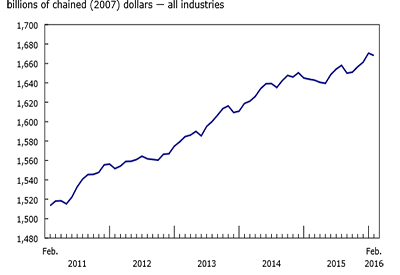Eventual Trillion-Dollar Market (Not Al Gore) Spurring Energy Storage Growth

Utility-scale energy storage is often discussed like it’s the flying car of renewable energy, but unlike the flying car, there is an immediate need and an eventual trillion-dollar global market to go along with it. After speaking with EnerVault’s new CEO, Ron Mosso, Temporal Power’s President and CTO, Jeff Veltri; and Bic Stevens, a former venture capitalist and current founder of the cleantech investment banking firm Stevens Capital Advisors, it is clear this technology is about to take off. Both EnerVault and Temporal Power have new, fully operational, plugged-into-the-grid energy storage facilities and have immediate plans for more.
We may never see the flying car, but as solar and wind prices continue to plummet the need for a means to store energy is not only very real but is becoming critical. Energy storage will be an essential part of future power grids and it actually has little to do with global warming.
There are two basic applications for utility-scale energy storage: long duration and frequency fluctuation. Both will play an important role in the future of utility energy storage, yet will have uniquely different roles and markets. Long-duration energy storage companies like EnerVault, which recently deployed a one megawatt-hour iron chromium flow battery storage facility near Turlock, CA, specialize in storing and delivering large amounts of energy. Flow batteries have been around a long time, but only recently has the technology evolved to the point where scientists started to see enough breakthroughs to where research projects could develop into venture capital-backed startups.
Everyone is aware of the efficiency of lithium-ion batteries, but the materials used to make these batteries are expensive. Mosso explained that there is a fundamental cost advantage to using abundant and cheap materials like iron and chromium in a flow battery, but there are also well-known side reactions that have limited its potential in the past. EnerVault’s technology development has focused on mitigating and reversing those side reactions typically associated with iron and chromium flow battery technologies to the point where Mosso believes that “by 2016 EnerVault will be putting one-megawatt systems out into the field; by 2017 they will be multi-megawatt, four- to six-hour systems.”
Mosso indicated that EnerVault’s plans to start deploying its technology are fueled by the visibility of a rapidly growing market with very large, very real projects:
• the Long Island Power Authority, now part of PSE&G, put out requests for proposals for 150 megawatt to 600 megawatt 12-hour systems to add grid resiliency and load leveling services replacing their 60-year-old “peaker plants” starting in 2019; by 2022 PSE&G’s goal is to have approximately 1000 megawatts of storage
• Southern California Edison has announced the procurement of over a gigawatt-hour of storage, more than five times its previous request for proposals for 50-megawatt, 4-hour systems
• Japan’s Hokkaido Electric is installing a 12-megawatt, 5-hour system
• California’s Public Utility Commission has a mandate in place whereby in 2020 its utilities will need to be purchasing 1.3 gigawatts from energy storage
China will also be one of the largest players in energy storage. IHS is projecting for China to have installed close to 7 gigawatts of energy storage by 2021. While most of the utility-scale energy projects are still 3 to 7 years out, there are also microgrid projects in rural areas like Alaska, Australia, South America, Africa, and island grids, where coupling energy storage with wind or solar is cost-competitive right now with traditional means of power generation.
The driving force behind this push for utility-scale energy storage is best exemplified by solar power. The fact that the sun goes down every day means that without some sort of energy storage, solar power will be extremely limited no matter how cheap it becomes. Solar’s issues with night can, however, be mitigated by such technologies as flow batteries. Mosso explains that flow batteries are a natural fit for “time shifting,” or taking collected energy from renewable power outputs like solar or wind and storing that energy until it is needed later in the day. As solar and wind energy prices begin to pass below traditional fossil fuels in price, having a way to cheaply store energy for multiple hours or even days is vital for creating greener, cheaper power grids.
While long-duration energy storage might still be a few years away from making a significant impact on large utility grids, Jeff Veltri is claiming Temporal Power’s new 2-megawatt flywheel plant in Ontario is proof its technology is ready right now for utility grid-scale use in frequency regulation. In addition to being green, Veltri says its flywheel is in many ways a superior technology. He explains that the misconception out there is that renewable energy storage is being pushed by various governments just to help meet environmental standards. While every continent in the world is becoming more concerned with their environmental impact, these new renewable energy storage technologies are also in many ways technologically superior to traditional means of grid power output.
Veltri explained that unlike “peaker plants,” which take a minute to several minutes to ramp up and react to moderate electrical fluctuations, Temporal Power’s flywheel systems can act immediately and in real-time to frequency fluctuations within the grid. The ability to react to grid fluctuations in milliseconds instead of minutes gives grid operators the ability to send the right amount of power in real time. Veltri gave an example that in some microgrids relying on diesel to stabilize their frequency, Temporal Power can give them an extremely quick ROI because in some cases their flywheel can reduce the amount of time the diesel generators are running by up to 90%.
Veltri said that, with its Ontario plant, the company has demonstrated to have not only a greener product, but one that is technologically superior to traditional means of frequency fluctuation. Their success so far has led to quote requests for projects in Canada, the U.S., Japan, and South Korea. Veltri suggests perhaps the biggest indication of how the industry has progressed is: “Two years ago I was having to go out and educate the customer on who we are and what we do. Now what we are seeing is a much more sophisticated customer who is coming with specifics in mind, who understands the technology.”
Even with all the technological progress energy storage has made, there are still hurdles ahead, among these is that there are other ways of shifting the grid to account for both power fluctuation and time shifting. Stevens explains: “You can solve the problem three other ways: you can handle it with better transmission and a better grid, you can solve it with more distributed solar as opposed to centralized solar, and thirdly you can solve it with better demand management.” The various solutions to creating a more efficient power grid are not “either/or” solutions — the silver bullet for renewable energy is a shotgun blast, no single technology is going to win out. The best grids will be diversified.
Stevens points out that, while these other grid solutions are competing with energy storage, “the real thing that is holding back the energy storage industry is that it still costs too much.” He sees most energy storage technologies as still 3 to 5 years out from being cost competitive enough for utilities to start integrating them into their grids. As more solar gets plugged in, however, and projections like Cal ISO’s “Duck Curve” start to materialize, progressive utilities will have to start plugging in energy storage. The market for energy storage companies is still in its infancy, but Stevens believes that in 10 years there could be a $100 billion global market for “Utility Energy Storage.”
It will not be fear of climate change or videos by Al Gore that will ultimately move energy storage technology forward. It will be the promise of unlocking an eventual trillion-dollar global market. Venture capitalists have placed some high bets on energy storage startups and, according to Stevens, who brokered the deal between Lockheed Martin and Sun Catalytix, now “strategics” who can afford to look more long term than venture captialists are starting to take notice. A publicly traded company like Lockheed Martin didn’t acquire Sun Catalytix earlier this year because it wanted to save the world. It did so because it sees it as a way to cash in. For those companies and investors who have the patience, the reward will eventually be a place in a trillion-dollar market.
Byron Anderson is a recruiter with Helix Recruiting, Inc, a boutique executive search and recruiting firm that specializes in: cleantech and renewables; specialty chemicals and alternative fuels; utilities and power generation.











